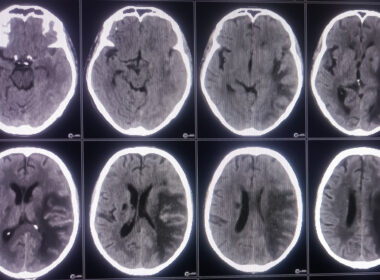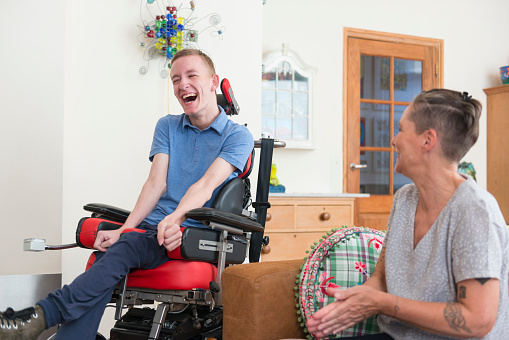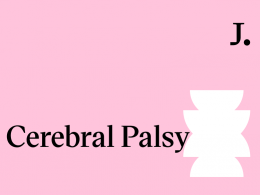Cerebral palsy is a group of disorders that impacts roughly one to four out every 1,000 children in the United States and worldwide, according to the CDC. It is a group of disorders that affects the nerves, often leading to problems with movement and balance.
Doctors tend to diagnose cerebral palsy in children’s early years of life. The symptoms can range from mild to severe. The severity of cerebral palsy symptoms will impact the support and treatment that a child will need.

Cerebral Palsy Risk Factors
As the Centers for Disease Control and Prevention (CDC) notes, cerebral palsy is a group of disorders that impacts the nerves. Cerebral palsy happens when a child’s brain develops abnormally or when a child experiences brain damage. This damage can happen before, during, or shortly after birth.
Any child can develop cerebral palsy. However, certain risk factors may increase a child’s chance of developing cerebral palsy. For example, children born prematurely or with a low birth weight are at a higher risk for developing the condition. Or, if a mother gives birth to multiples, such as twins or triplets, the risk is also much higher that one of them may have cerebral palsy.
Depending on the severity, cerebral palsy can significantly impact a person’s function and quality of life. While cerebral palsy can affect anyone, it is most often diagnosed in young children because this is when the symptoms usually begin to show. While there is no known cure for cerebral palsy, doctors and other medical professionals can develop a plan to help people with cerebral palsy manage their symptoms and live more comfortably.
Common Cerebral Palsy Symptoms
The symptoms of cerebral palsy can range from mild to severe. As noted by the Eunice Kennedy Shriver National Institute of Child Health and Human Development, there are four main types of cerebral palsy that are diagnosed based on a child’s symptoms:
Spastic
In this type of cerebral palsy, people may have stiff muscles, jerky movements, and exaggerated reflexes. They might also have speech disorders and disabilities affecting their development and cognitive function, depending on further classifications.
Dyskinetic
People with dyskinetic cerebral palsy experience jerky movements that they have no control over. For example, their hands or feet might move suddenly, and they will have any control over when it happens.
Ataxic
People with this type of cerebral palsy are most likely to have balance problems and problems performing precise movements requiring depth perception. It might be hard for them to fasten buttons, for example, or write.
Mixed
Children with a mixed type of cerebral palsy exhibit symptoms found in the other three groups rather than in just one.
Cerebral Palsy Movement Symptoms
Some of the most common symptoms of cerebral palsy affect movement. A person with cerebral palsy may walk in a crouched position or have a foot that drags when walking. Other times, people with cerebral palsy will be unable to walk and may experience hip displacements, requiring them to use wheelchairs, crutches, or walkers. They might also have trouble balancing and maintaining proper posture.
Other common cerebral palsy symptoms include the following:
- Seizures, which involve changes in the brain’s electrical activity. When people experience seizures, they may experience convulsions and changes in their level of consciousness
- Abnormalities in sleep patterns and behaviors
- Problems with speech, which can even include an inability to speak
- Intellectual disability, where they might not be able to process information quickly, or they may have learning difficulties
- Incontinence of bowel and/or bladder functions
- Pain caused by muscle stiffness and rigidity
- Problems with vision and hearing

Early Warning Signs of Cerebral Palsy: Delays in Reaching Developmental Milestones
One early possible indicator of cerebral palsy is when your child does not reach milestones in development that are typical for their age group. Every child is different, and just because a child is not able to do certain things does not always mean that a child has cerebral palsy. However, it is one common warning sign that should be taken seriously. If a child used to be able to do something and can no longer do it, it can indicate other health problems.
Here are important milestones to be aware of:
- By six months: Most children should be able to roll over from their stomach to their back.
- By nine months: Most children can move themselves into a sitting position. They can typically sit without someone supporting them.
- By one year: Most children can pull themselves up to a standing position and can walk while holding onto supports like furniture.
Keeping track of your child’s development and activity can help you identify early signs of cerebral palsy.
Diagnosing and Treating Cerebral Palsy

You might not suspect that your child has cerebral palsy right away. However, regular checkups with your child’s primary care provider are essential. Your child’s doctor can help you track the milestones typical for children in your child’s age range.
Talk to your child’s doctor about your concerns if you notice abnormalities, such as delays in certain milestones. The doctor may make further assessments or recommend specific follow-up evaluations based on your concerns.
Based on your child’s symptoms, the doctor may recommend treatment and supportive services for your child. The main goal is to help your child gain as much independence as possible and to help your child achieve a maximum level of functioning.
Medical Malpractice and Cerebral Palsy
Sometimes, cerebral palsy can result from the careless actions of medical professionals which cause brain damage in infants prior to, during, or shortly after birth. Fill out our contact form below for more information if you think your child’s cerebral palsy may have resulted from medical malpractice. We can assess the circumstances of your case and recommend whether or not legal action may be appropriate.












